 EN
EN
 PT
PT

Activities and worksheets for an inclusive didactics in primary school
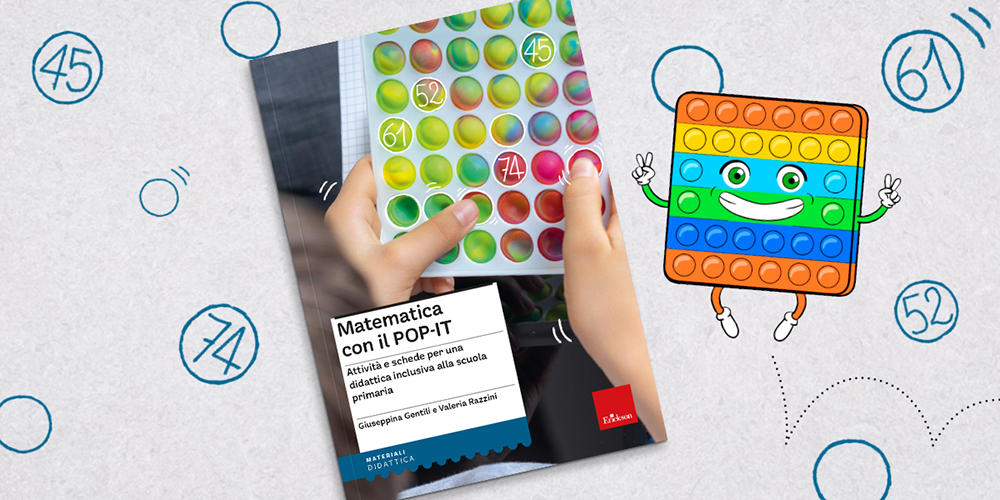
The POP-IT in the 10 x 10 format can be used effectively as a learning tool in primary school. Being structured like the chart of 100 numbers, it provides manipulative-spatial support which is useful for consolidating skills and concepts. In addition, thanks to its playful component, it promotes motivation, involvement and inclusion.
The volume Mathematics with the POP-IT offers numerous learning units with multiple activities and worksheets for using the POP-IT applied to mathematics, from grade one to five of primary school, to consolidate and enhance concepts and strategies.
Structure of the volume
The volume offers five working proposals, one for each primary school class, made up of multiple Learning units with numerous activities organized with the same methodological-procedural structure.
Each Learning unit opens with a description:
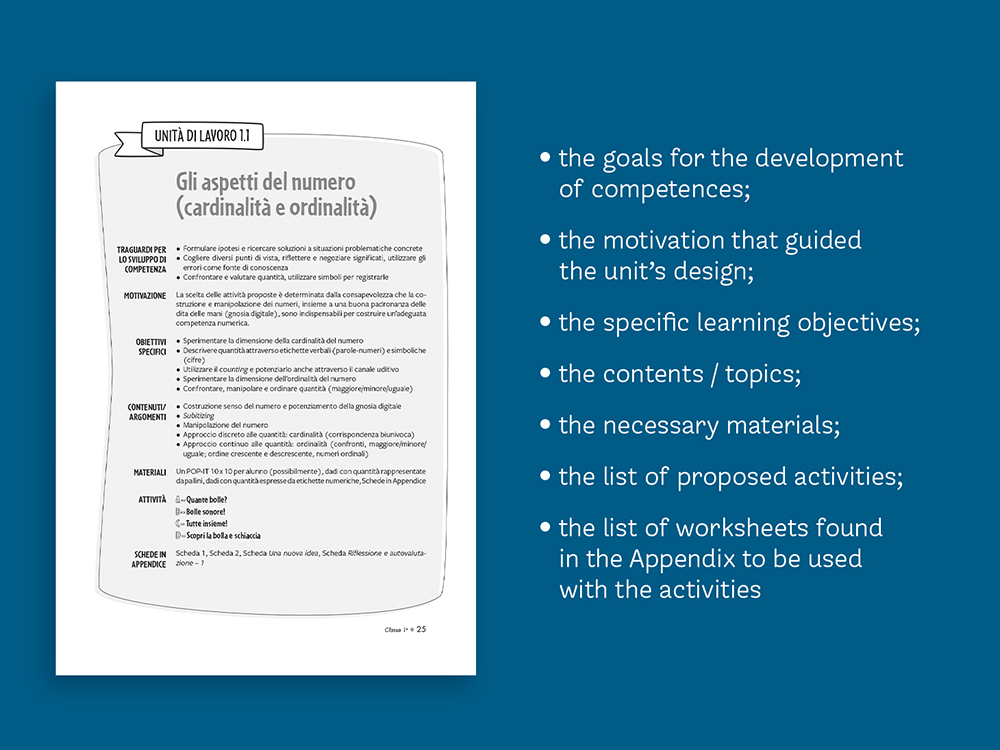
Each activity is proposed according to the context of the child, and not dictated from above. We use the POP-IT not only because we want to learn mathematics, but to solve a real and concrete problem that is gradually proposed.
Furthermore, each activity illustrates in detail:
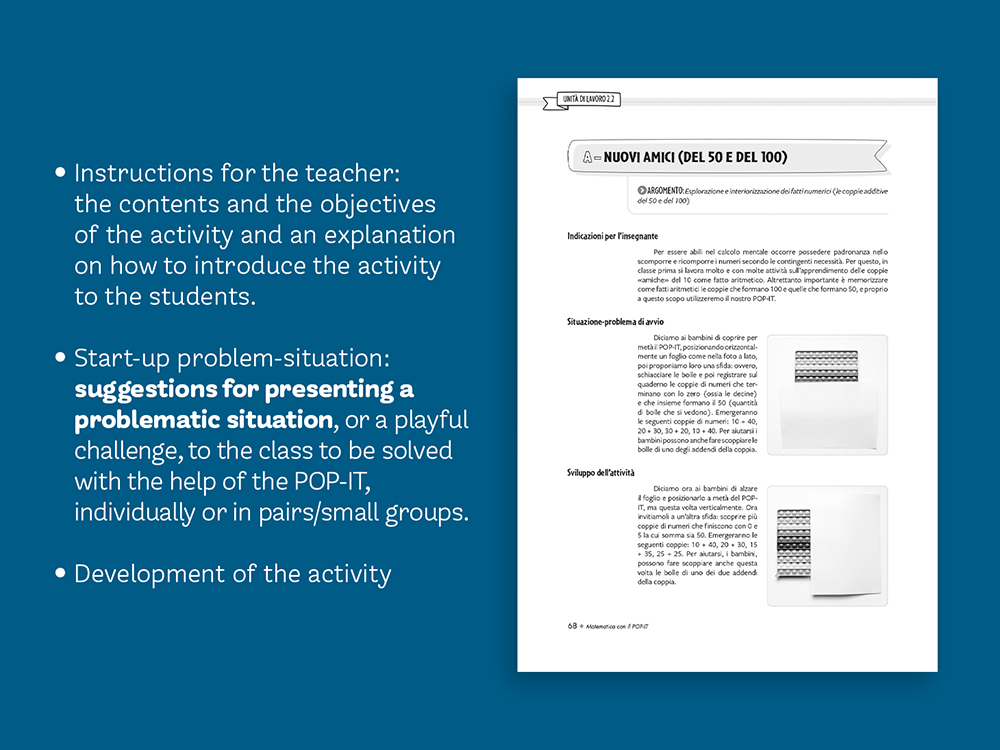
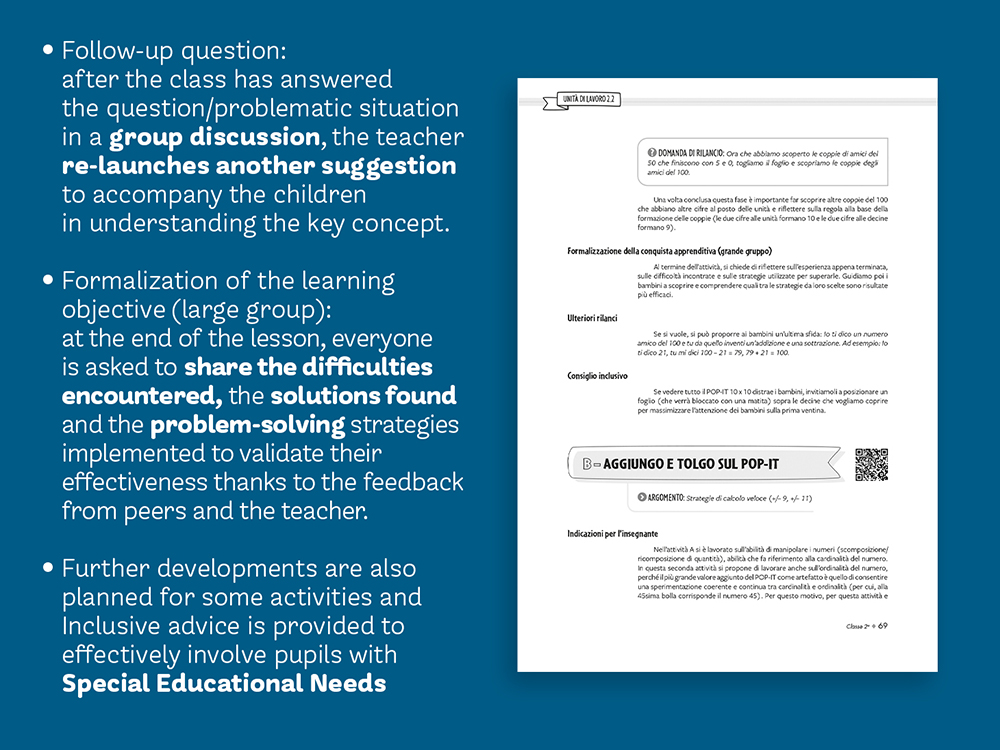
By framing the QRcodes placed near the title, it is possible to view in-depth videos and explanations
The worksheets in the Appendix allow the children to consolidate the skills achieved in each activity, put their creativity into play to invent new activities to reflect on the work done.
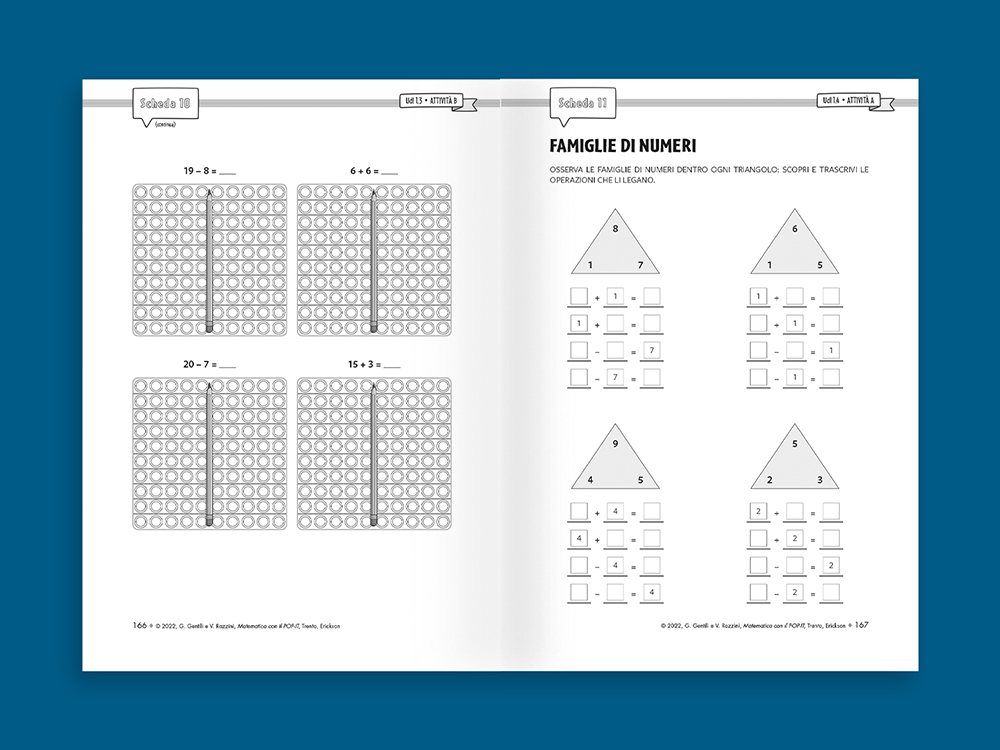
Leaf through some selected pages from the book that have been translated into English to facilitate your evaluation:
An inclusive tool
The extremely inclusive nature of the POP-IT is an exceptional aspect: all children, even those with Special Educational Needs, can use it together and in the same way, activating and exploiting the sensory channel with which they learn best. Being a fidget toy, its use will bring peace of mind and favours stress relief with consequent greater adaptation to situations in the classroom.
THE AUTHORS
Giuseppina Gentili Multimedia teacher and trainer, she graduated from the University of Macerata, where she was later part of the scientific organizing committee of the annual Summer School on Gardner’s Theory. Currently, in addition to teaching, she coordinates the IMAS (Multiple Intelligences At School) action research group and carries out training activities at the Erickson Study Center in Trento.
Valeria Razzini Primary school teacher, specialized in inclusive teaching, she collaborates as a trainer and Communication teacher. She holds a second degree in Primary Education Sciences from the University of Reggio Emilia and specialization in Specific Learning Disorders and Special Educational Needs. She has published several essays on the teaching of mathematics.